Test Bank for Cellular and Molecular Immunology 7th Edition Abul K Abbas Download
$38.00
Title: Test Bank for Cellular and Molecular Immunology 7th Edition Abul K Abbas Download
Edition: 7th Edition
ISBN-10: 1437715281
ISBN-13: 978-1437715286
- Description
- Reviews (0)
Description
You will receive this product immediate after placing the order
***THIS IS NOT THE ACTUAL BOOK. YOU ARE BUYING the Test Bank in e-version of the following book***
Title: Test Bank for Cellular and Molecular Immunology 7th Edition Abul K Abbas Download
Edition: 7th Edition
ISBN-10: 1437715281
ISBN-13: 978-1437715286
– The test bank is what most professors use an a reference when making exams for their students, which means there’s a very high chance that you will see a very similar, if not exact the exact, question in the test!
– The file is either in pdf, doc, rtf or zipped in the package and can easily be read on PCs and Macs.
– Delivery is INSTANT. You can download the files IMMEDIATELY once payment is done.
We also faced similar difficulities when we were students, and we understand how you feel.
But now, with the Test Bank for Cellular and Molecular Immunology 7th Edition Abul K Abbas Download, you will be able to
* Anticipate the type of the questions that will appear in your exam.
* Reduces the hassle and stress of your student life.
* Improve your studying and also get a better grade!
* Get prepared for examination questions.
* Can save you time and help you understand the material.
This is the quality of service we are providing and we hope to be your helper.
Delivery is in the next moment. Test Bank is accurate.
If you have any questions, or would like a receive a sample chapter before your purchase, please contact us at inquiry@testbanksafe.com
Activation of T Lymphocytes
Test Bank
Multiple Choice
1. All of the following protein-protein interactions are involved in activation of naive helper T cells by antigen-presenting cells (APCs) EXCEPT binding of:
A. Peptide-MHC complexes on the APC to the TCR on the T cell
B. CD4 on the T cell to nonpolymorphic regions of class II MHC molecules on the APC
C. Integrins on the T cell with adhesion ligands on the APC
D. B7-2 on the APC with CD28 on the T cell
E. CD40L on the T cell with CD40 on the APC
ANS: E. CD40L is not expressed on naive T cells and is only up-regulated subsequent to activation by an antigen-presenting cell (APC). In the naive helper T cell, the TCR binds to the MHC-peptide complex whereas the CD4 coreceptor engages a conserved region on the MHC II molecule. Integrins on the T cell interact with adhesion ligands on the APC. This region of binding between the T cell and the APC is known as the immunologic synapse and also includes costimulatory interactions, such as CD28 on the T cell binding to B7 on the APC.
2. Which one of the following statements about MHC-TCR interactions is NOT true?
A. Antigen receptors on T cells bind to MHC molecules for only brief periods of time.
B. The affinity of most TCRs for peptide-MHC complexes is similar to the affinity of antibodies for their antigens.
C. Only 1% or less of the MHC molecules on any antigen-presenting cell (APC) display a peptide recognized by a particular T cell.
D. T cells usually require multiple engagements with an APC before a threshold of activation is reached.
E. A subthreshold number of MHC-TCR interactions can lead to T cell inactivation.
ANS: B. In general, the TCR binds to peptide-MHC complexes with lower affinity than antigen-antibody interactions. This relatively low-affinity interaction occurs briefly; thus, a T cell may need multiple engagements with the antigen-presenting cell (APC) before a threshold of activation occurs. If this threshold is not reached, the T cell may enter into an inactive state known as anergy. On any given APC, less than 1% of the MHC molecules display the same peptide.
Matching
Questions 3-10
For each of the descriptions in questions 3-10, choose the T cell signaling molecule that best matches it from the list below (A-O).
A. CD3
B. Lck
C. Zap-70
D. LAT
E. Ras
F. PLC?
G. PIP2
H. PIP3
I. IP3
J. DAG
K. Calcineurin
L. NFAT
M. Jun
N. Fos
O. NF-?B
3. This molecule becomes an active transcription factor on dephosphorylation.
ANS: L. NFAT is a transcription factor required by T cells for the expression of interleukin (IL)-2, IL-4, tumor necrosis factor (TNF), and other cytokine genes. NFAT is present in an inactive, phosphorylated form in the cytosol of resting T cells. On dephosphorylation by calcineurin, a nuclear localization sequence is uncovered that permits NFAT to translocate to the nucleus. Once in the nucleus, NFAT induces transcription of these genes.
4. This protein is a well-characterized proto-oncogene product that on mutation to a constitutively active form has been associated with multiple neoplasms.
ANS: E. Ras was one of the first proto-oncogenes characterized. Normal ras is involved in TCR signaling pathways. On mutation to a constitutively active state, ras promotes the survival and proliferation of malignant cells.
5. Binding of this molecule to Jun is needed for transcriptional activation of the IL-2 gene.
ANS: N. Fos combines with phosphorylated Jun to form activation protein-1 (AP-1). AP-1 is the name for a family of DNA-binding factors composed of dimers of two different proteins. Transcription of fos is enhanced by the Erk pathway, whereas phosphorylation of preexisting Jun is induced through the Vav/Rac pathway. AP-1 physically associates with other transcription factors in the nucleus, and together they activate transcription of cytokine genes essential for T cell activation.
6. This is a transcription factor that exists in the phosphorylated form within the nucleus.
ANS: M. On phosphorylation, c-Jun translocates to the nucleus and binds to Fos to form AP-1.
7. Immunosuppressive therapy with the drugs cyclosporine and FK506 inhibits T cell activation by blocking the protein phosphatase activity of this molecule.
ANS: K. Calcineurin is responsible for the dephosphorylation of NFAT, which is an essential transcription factor for the activation of T and B cells. The immunosuppressive drugs cyclosporine and FK506 function by inhibiting calcineurin. These drugs are commonly used to prevent transplant rejection.
8. This molecule binds to a receptor on the endoplasmic reticulum and stimulates release of calcium into the cytosol.
ANS: I. IP3 is generated from the cleavage of PIP2 in the membrane to DAG and IP3 by the enzyme PLC?, and it stimulates release of calcium into the cytosol.
9. This molecule has the same downstream effect as addition of the drug phorbol myristate acetate (PMA) to T cells.
ANS: J. Both DAG and pharmacologic agents such as phorbol myristate acetate (PMA) activate protein kinase C (PKC). PKC has many substrates and is a potent activator of many transcription factors in T cells.
10. This molecule is a transcription factor involved in the expression of several T cell activation genes activated when its bound inhibitor is phosphorylated.
ANS: O. NF-?B is present in the cytoplasm and is bound to an inhibitor called I-?B. On stimulation with antigen, I-?B becomes phosphorylated, dissociates from NF-?B, and is degraded by the ubiquitin-proteosomal pathway. NF-?B then translocates to the nucleus, where it participates in transcriptional activation of several genes.
Be the first to review “Test Bank for Cellular and Molecular Immunology 7th Edition Abul K Abbas Download”
You must be logged in to post a review.

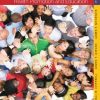

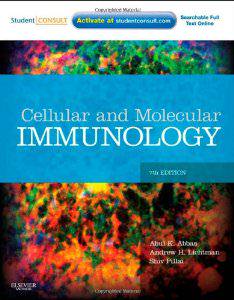


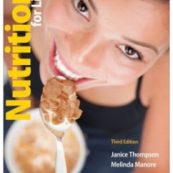
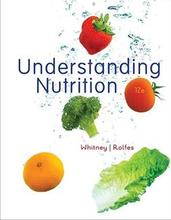
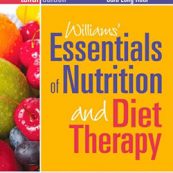

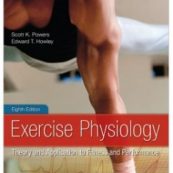
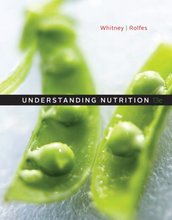


Reviews
There are no reviews yet.